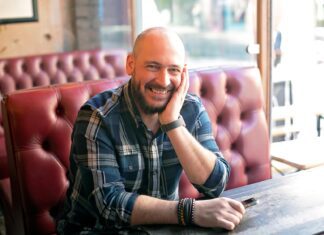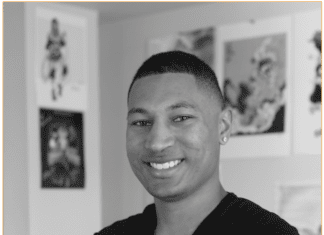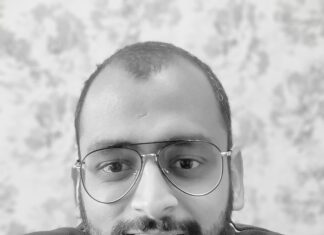Q: What are your specialty areas?
Indraneel: Internet of Things, Edge Computing, Cloud Computing, Big Data, Machine Learning, Domain Driven Design
Q: How did you become an author for Packt? Tell us about your journey. What was your motivation for writing this book?
Indraneel: It was my dream to be an author so I can share my knowledge gathered in the last 17+ years working with fortune 500 companies with a broader community of technologists. I believe this knowledge will motivate the next generation of technologists to invest more in these set of technologies to innovate further. I reached out to packt with my ideas and they agreed to collaborate and support my journey to make this dream a reality.
Q: What kind of research did you do, and how long did you spend researching before beginning the book?
Indraneel: It took us around 9 months to publish this book from the inception. Almost 25-30% of that time is spent around researching the best way to deliver this content around a storyline that is easily relatable. In addition we tried to use standard industry terminologies and concepts across the book to help readers from different backgrounds grasp this content .
Q: Did you face any challenges during the writing process? How did you overcome them?
Indraneel: It was challenging at times to think through the differentiated value of this book and ensuring its not redundant with the other publications available in the market. In addition, building various technical collaterals to complement the theory insisting on the highest bar took a lot repetitions based on the feedbacks from various technical reviewers. In summary, perseverance is the key.
Q. What’s your take on the technologies discussed in the book? Where do you see these technologies heading in the future?
Indraneel: The world around us is more connected than ever. There is a projection of having trillions of connected devices around us in next few years that will take advantage of the edge to cloud continuum. Thus the set of technologies explained in this book is fundamentally key and crucial for the success of various future innovations, products and services.
Q. Why should readers choose this book over others already on the market? How would you differentiate your book from its competition?
Indraneel: This book is for IoT architects and software engineers responsible for delivering
analytical and machine learning–backed software solutions to the edge. This book will also accelerate the journey of existing AWS users who want to learn and build IoT solutions that spans from edge to cloud. There is no equivalent book in the market that paints the 360 degree view of how smart applications can be designed using various best practices and design patterns from edge to cloud. The book also highlights various anti-patterns from the real world to give readers a peek to the challenges they need to foresee and incorporate in their designs.
Q. What are the key takeaways you want readers to come away with from the book?
Indraneel: This book will teach how to combine the technologies of edge computing, data analytics and machine learning to deliver next-generation cyber-physical outcomes. Readers will begin by discovering how to create software applications that run on edge devices using software from Amazon Web Services such as AWS IoT Greengrass. As they advance, readers will learn how to process and stream IoT data from the edge to the cloud and use it to train ML models using Amazon SageMaker. The book also shows how to optimize these models and run them at the edge for optimal performance, cost savings, and data compliance. By the end of this book, readers will be able to scope their own IoT workloads, bring the power of data analytics, machine learning to the edge, and operate those workloads in a production setting using well architected best practices.
Q. What advice would you give to readers learning tech? Do you have any top tips?
Indraneel: If the reader is interested in learning about various concepts, design patterns and reference architectures, they will find the book very useful. But this book will add most value if the reader also takes advantage of the hands-on labs. The labs are curated in such a way that readers with various technology proficiency can complete it. In addition the source code is made available on github for readers to get started quickly with their prototypes.
Q. Do you have a blog that readers can follow?
Indraneel: Nope, but we can plan to post few LinkedIn blogs with various tips and guidance on a regular basis (may be every 3-4 weeks).
Q. Can you share any blogs, websites and forums to help readers gain a holistic view of the tech they are learning?
Indraneel: Various websites, references are available in the book
Q. How would you describe your author journey with Packt? Would you recommend Packt to aspiring authors?
Indraneel: My journey was rough because I had to steal a lot of time away from my family to author this book over early morning hours, late evenings and even weekends. Authoring a book along with a day job can be exhausting. In addition, being a first time author the content had to go through multiple iterations so its polished enough. But the entire team of Packt including the editors, graphic designers, business development and project managers were very collaborative in every step of this journey. As i look back into this process now, I feel this journey had been very rewarding and enlightening. I will recommend others to take this challenge of authoring a book at-least once in life.
Q. Do you belong to any tech community groups?
Indraneel: Yes, various LinkedIn groups such as – Cloud computing, Internet of Things community, Big Data and Analytics, The Enterprise Architecture, Amazon Web Services Users. Happy to join others if you have recommendations.
Q. What are your favorite tech journals? How do you keep yourself up to date on tech?
Indraneel: IEEE Journals, The IoT Magazine, IoT Evolution Magazine
Q. How did you organize, plan, and prioritize your work and write the book?
Indraneel: I blocked 1 hr early morning and 1 hr in the evening everyday including weekends to do the research and writing of the book. At times I was lagging badly, so I used my vacation time to block few days of the week and just focus on drafting the book.
Q. What is that one writing tip that you found most crucial and would like to share with aspiring authors?
Indraneel: Find a time on a daily basis which has least distraction from work, family or any other activities. Spending even 1 hr each day and building the habit of writing (preferably around the same time), will help accomplishing more compared to writing over weekends only. Secondly, find a co-author as it helps you to brainstorm and make progress faster together. Writing a book on your own if you have a day job along with family responsibilities is pretty tough.
You can find Indraneel’s book on Amazon by following this link









